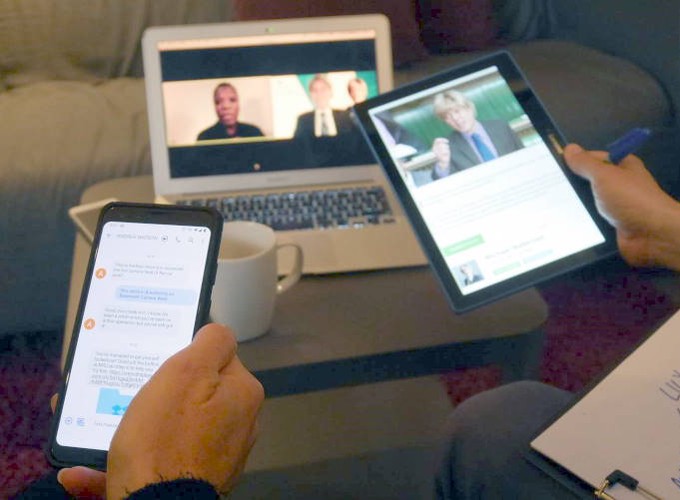…and this time it’s online!
Back in 2019, we toured ‘A Moment of Madness’ to a number of UK festivals. AMoM is an immersive experience with live actors and Escape Game style puzzles where the players are on a stake-out in a multi-story car-park tracking politician Michael Makerson (just another politician with a closet full of scandals!).

We were hoping to bring it back in 2020/21 – but a worldwide pandemic got in the way of real-world experiences. So, instead it has been re-imagined for the post-COVID world.
If you’ve not played it yet and are reading this at the beginning of June 2021 then you’re in luck. There is a limited run presented with Creation Theatre this week. If you’re in the UK then head here to book tickets:
If you’re too late – then follow me on Twitter – I’ll share information there first of any future tours. Or sign up to The Other Way Works mailing list here.
So, what was it again?
AMoM is a political spy-thriller for 6 teams in 4 stake-out vehicles. Players are tasked with investigating a politician, Michael Makerson MP, who has been having secret meetings in a car-park. It follows a classic three act structure.
ACT 1: players attend an MI5 briefing under the guise of a conference business meetings
ACT 2: players head off to the car park for the stake-out
ACT 3: players return with the information they’ve discovered. They share this with the group and then vote on what to do with this information and Michael’s career.
It’s bookended by two phases involving live interactions with Michael. Before Act 1, Michael is in the same location as the players. He is there to give a press-conference in 90 minutes. Michael never misses an opportunity to talk to the public and improve his image. And after Act 3 the epilogue is Michael giving that speech – which changes based on the players decisions.
It’s important that the players get to personally interact with Michael before they investigate his life and also to see the consequences of their decision by facing him while he gives his speech.
How can we make it work in a post-COVID environment?
The first question is how we should change it to work around social distancing. The most difficult part is planning when you have no idea what restrictions will be in place and how your audience will feel about engaging in these types of experiences.
-
As close as possible to the original version
- teams are currently in individual cars – so they are distanced already for the middle portion of the game. We could probably find ways to keep groups apart during the other acts. Meeting with Michael might be an issue.
-
Drive-in version
- Players drive their own car into the stake-out and the game proceeds as before. Again, the interaction with Michael is difficult to recreate. A big concern of this was that players would be spending a very long time in their own cars. Driving to the venue. Waiting for the game to begin. Act 1 and Act 3 delivered remotely and then the actual stake-out.
- Clearly, people do manage this for drive-in movies but it was felt that AMoM wasn’t a great match for it. There’s an alternative style of game here… Secret Cinema meets movie drive-in. (If you’re interested in games designed for movie theatres then check out my earlier game [renga])
-
Zoom-based version
- Move entirely into an online version. Obviously, this has the main benefit that audiences can play from anywhere. However, we lose all the real-world immersion – which is pretty much the reason why I moved from building online games into those for the real-world. Interacting with Michael, Lily and being on a live stake-out are all very unique and memorable moments. Just getting into a car that isn’t yours to be part of a stake-out is something that stays with the players afterwards and no amount of zoom / online magic can recreate that.
WARNING: If you’ve not played A Moment of Madness and are planning to then I’d recommend: STOP READING NOW. SPOILERS a plenty below. I’ve tried to not give away too much of the story but still I’d stop here if you’re playing any time soon.
What did we try to keep in the online Zoom version?
The same characters and story world:
We wrote a huge amount of world and history (most of which the players don’t get to see) for the earlier version. All of this we like and in fact has been built on over time.
The same overall structure:
The three acts work well. Michael giving a press conference in 90 minutes gives a sense of urgency to the mission.
Unique Team experiences:
One of the slightly twisty moments in AMoM is that the players normally think that they are all doing the same thing in parallel. And to a certain extent they are. In fact, they all see different things in the car park and find different evidence. This means that when they come back to Act 3 – they all have something different to contribute and generally have very different opinions on Michael.
Interaction with Lily and Michael:
Lily is our MI5 handler (played by the very wonderful Deborah Tracey) and Michael Makerson MP is our politician (played by the absolutely fantastic Laurence Saunders). In the original version players don’t really see these two characters together. A big improvement of the zoom version is that Lily and Michael are the same room together and function as a double-act. Lily, essentially being the ‘straight-man’ and Michael the bumbling buffoon character. During the early part of the zoom call Michael interacts with each team – so they get a bit of what they had in the original AMOM. It my opinion it’s worth seeing the show just to get to see Deb & Laurence work their magic together in Act 1!
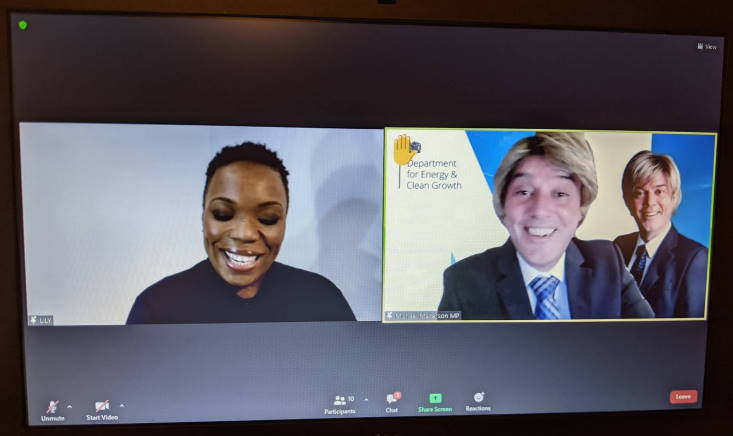
Mobile phone interactions:
In the original version ACT 2 is driven by phone interactions with Andrea, Michael’s (basically Michael’s Assistant). Andrea is also working for MI5 and keeps the players abreast as to Michael’s movements. She also delivers information to the players which allows them to perform their mission.
Car-park setting:
The fact that Michael is carrying out the meetings in a secretive way is key to the story. We did consider alternative locations – since without the cars we no longer needed to be tied to a multi-story car park. It needed to be a space that could be monitored remotely probably by CCTV. And ideally where it was a large enough space that required multiple teams to monitor it. A variety of other environments fit this model but ultimately, we still liked the car park setting.

What did we need to change?
In the original version we provide players with a mobile phone, a stake-out vehicle, MI5 dossiers, lanyards, notepads and even Werther’s Originals. Also, in Act2 players find and break into real lockers in order to retrieve physical evidence. And in Act3 they vote on the outcome using black & white coloured sweets.
All of these bits (apart from the Werther’s Originals needed to be replaced with online / virtual versions). Players provide their own phones & devices.
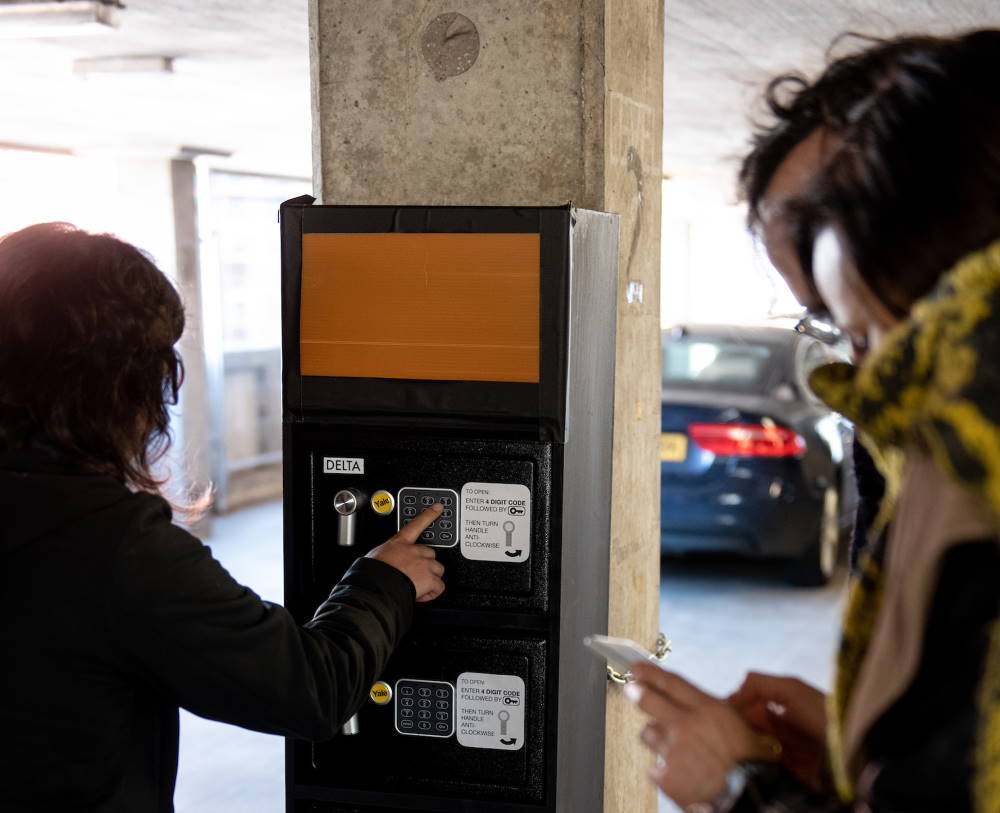
Recreating Act 1
Act 1 remains basically the same. It has more training – as there’s more instructions around both Zoom and accessing the materials for hacking. It’s also where the player interaction with Michael comes in.
Recreating Act 2
This was always going to have the most significant changes. Instead of going to a car park players would hack into a set of CCTV cameras that monitor the car park. To do this we filmed a single 50-minute scene in the car park using multiple fixed cameras. We worked with the super talented Chris Keenan.
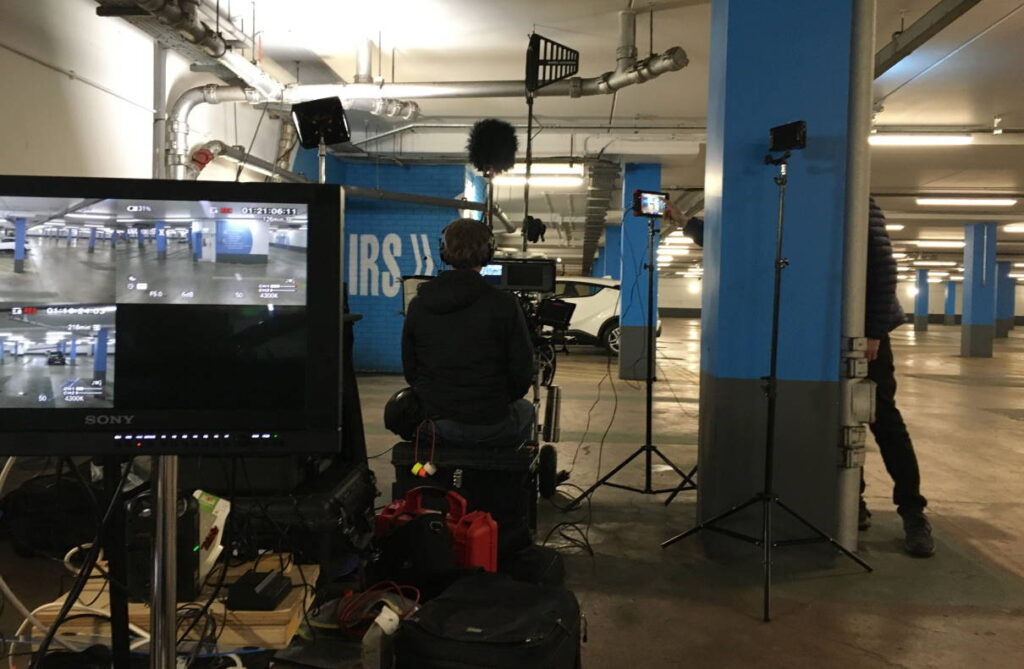
The Live version had a slightly variable length depending on how well the players were performing. As players hit markers in the game progression – the actors were automatically cued. We used Slack for this. The Slack API allows the main game control system to post messages directly to our ‘System Updates’ channel. Altering the length of the game isn’t possible when it uses pre-shot film.
Andrea is our main point of contact with the players. Some players completely ignore her whereas others really engage with her. Some teams try to extract more information from Andrea, other teams don’t trust her and she’s even been asked out on dates after this all blows over! By talking with Andrea, we have some idea of what our players are up to. Some teams are too overwhelmed by everything else and almost forget that she exists.
The other problem we face is knowing what the players are up to. In the original game we had someone (a fake car-park attendant) posted in the car-park updating us over Slack. Often players or even teams would go AWOL in the car park. (Slight alterations in Andrea’s phrasing of instructions helped us to convince more players to stay in their stake-out vehicles).
The combination of Andrea and the updates via our car park attendant was something we needed to replicate. We needed someone to monitor them – particularly those teams that end up a bit lost and need some support. This was solved two-fold. Firstly, we keep the teams in a zoom breakout room. This allows us (in an emergency) to pop in and listen to what is happening and intervene if necessary. Secondly, all the websites that our players interact with send information back to our game control system. This means we have some visibility of what our players are doing and can hopefully guess where they are up to. This allows Andrea to deliver some more subtle clues without arousing too much suspicion that she is helping them.
Recreating Act 3
Act 3 is where the players return with the new evidence and present it to Lily. I feel like even though this is the most straight-forward to get working on zoom – it’s where we still haven’t managed to get the right balance. The physical presentation of materials to Lily and players talking through the areas they’ve found – has worked much better in-the-flesh. I think there’s a clear ownership of the physical materials they’ve gathered which is difficult to create online.
Once all the materials have been presented it’s up to the players to cast their vote on what to do with the evidence. Originally, this was by way of putting a black or white sweet into a vase. This has been switched to an online voting system – mentimeter.com.
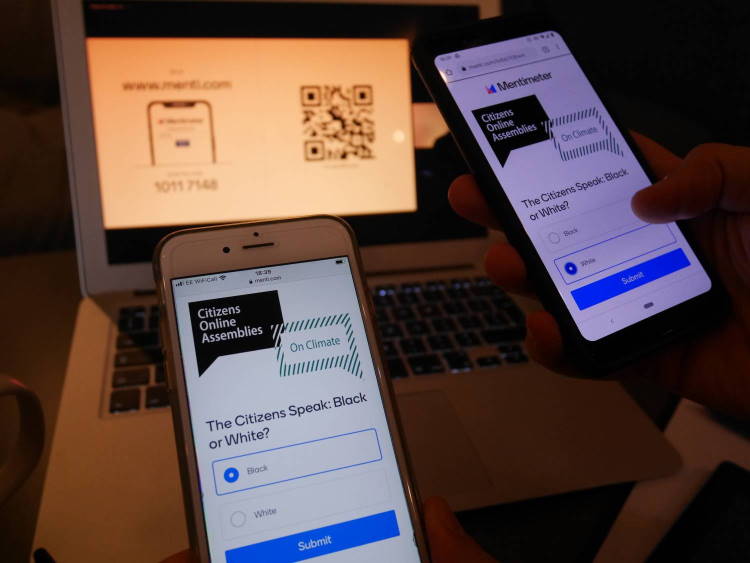
Behind the scenes
In its current form it requires 5 people to run the live shows. 2 live actors and 3 people behind the scenes. It would certainly be possible to optimise & automate some of these tasks to build a version of AMoM with fewer staff requirements. Most online Escape Games rooms manage with just 1 – but they usually manage a smaller group of players.
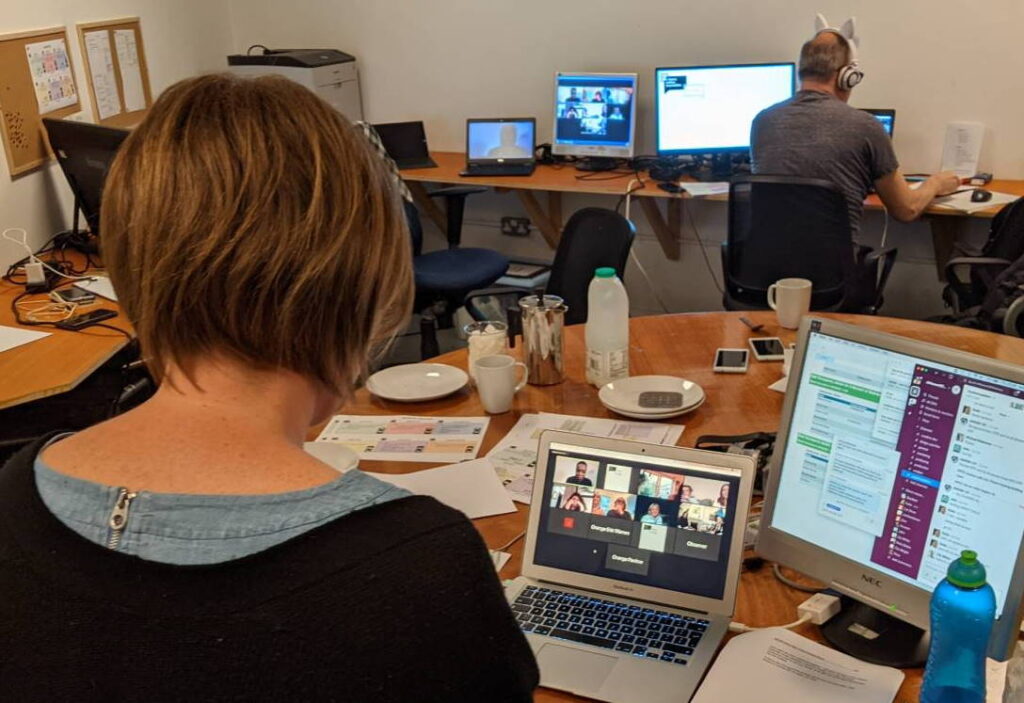
I’ll spare making this too technical a discussion but often share more about AMoM in more technology focused talks. If there’s more you’d like to know just get in contact – I’m happy to share more.
The main technology platform we use is Twilio. This handles all our voice and SMS communication (of which there is a fair bit). A custom Windows .net application allows a single person to manage the team game progress & the 6 simultaneous conversations between Andrea and the individual teams. This also requires php scripts and Azure Functions to handle the communications.
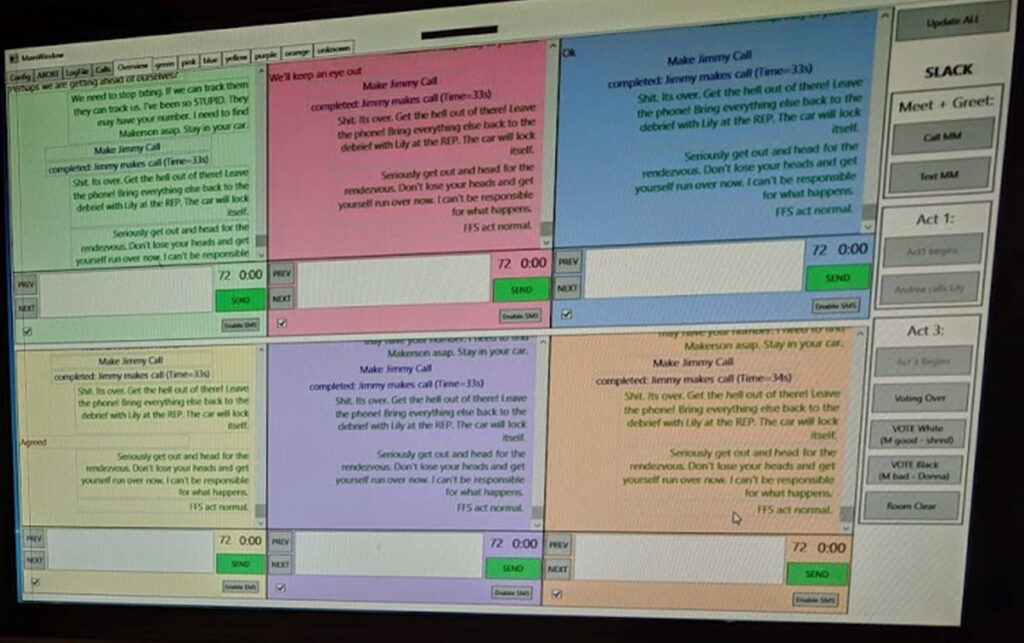
In addition, there are a bunch of custom websites (using a variety of frameworks) which the players interact with. Such as where the MI5 dossiers are accessed and the CCTV camera systems are hacked into and viewed.

Finally, the physical locker in the car park has been replaced with a bunch of folders in Dropbox (and a custom front end). This was probably the least successful part of the technology. Not only does it give us less visibility of what is happening but it’s possible for players to lock themselves out of the folders. If we run this AMoM online again I’m sure I’ll take the time to rewrite our own version of this.
Summary
I think it was a pretty amazing feat to bring AMoM to an online audience in what has frankly been a tiny amount of time. There’s so many people who deserve a huge thanks who haven’t already been mentioned: Niels, Tricia, Dave, Den and Jenny,
As with any immersive project we’ll continue to tweak & improve based on us watching teams play it & push its boundaries – so watch this space for updates!

